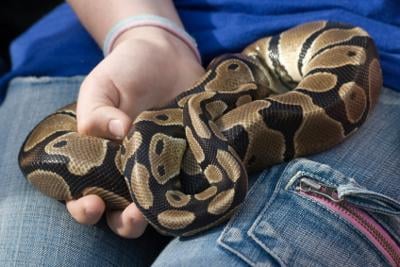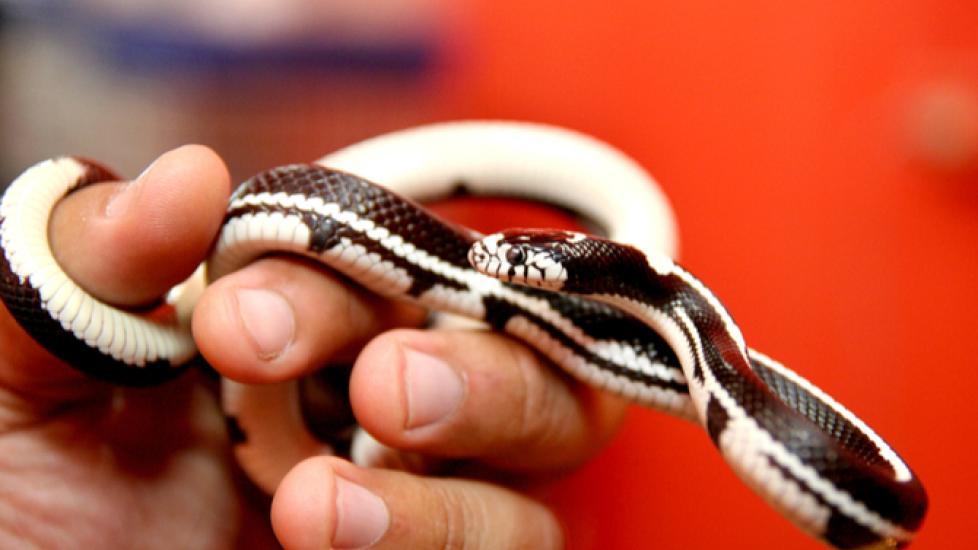Open the World of Reptiles: Snake for Sale Offerings
Open the World of Reptiles: Snake for Sale Offerings
Blog Article
Vital Care Tips for Family Pet Snakes: A Newbie's Guide
As beginner reptile lovers start the journey of looking after family pet serpents, comprehending the fundamental principles of proper husbandry is paramount. Establishing a solid structure for the wellness of these captivating creatures entails a collection of important treatment tips that can make a substantial distinction in their health and wellness and happiness. From picking the ideal serpent types to developing an ideal habitat and keeping optimum environmental conditions, each action plays a crucial duty in fostering a flourishing relationship in between owner and snake. By discovering the details of snake treatment, people can unlock a globe of expertise that will not just profit their scaly buddies however likewise deepen their gratitude for these exceptional pets.
Choosing the Right Snake Species
When selecting a snake species as a pet, it is critical to think about aspects such as treatment, size, and personality needs. Size is a crucial consideration as it straight influences the space needed for the snake to thrive pleasantly.

Establishing the Ideal Room
To create an ideal living atmosphere for your pet snake, meticulous interest to detail is called for when setting up the room. The initial factor to consider is the size of the enclosure, ensuring it offers ample room for your serpent to move and stretch out pleasantly. A basic guideline is to have a container that is at the very least as long as the serpent's size and large adequate to enable numerous hiding areas and a water dish.
Substrate selection is important, as it not just influences the aesthetic appeals of the unit but additionally plays a duty in keeping proper humidity levels. Popular substratums include aspen shavings, cypress compost, and paper towels, each using various advantages depending upon the serpent species and preferred humidity degrees.
Integrating a temperature slope is essential for your serpent's overall health and wellness. Make use of heat lamps, warm pads, or ceramic heating systems to develop a cozy side and a cooler side within the enclosure, allowing your snake to manage its body temperature as required. In addition, supplying ample lights, concealing spots, and climbing branches will offer enrichment and stimulation for your family pet serpent.
Giving Appropriate Heating and Illumination
Correct home heating and lights are important parts in producing an appropriate habitat for your pet snake. Serpents are ectothermic, indicating they count on external sources of warm to regulate their body temperature level. To simulate their natural surroundings and ensure your serpent's well-being, it is crucial to give a correct warmth slope within the enclosure. This gradient includes a warm basking area at one end, maintained at around 85-90 ° F for many snake species, and a cooler location around 75-80 ° F at the other end to permit thermoregulation.
For heating, under-tank home heating pads or warmth tape are generally used to develop a cozy place for your snake to bask. Additionally, snakes need a regular light-dark cycle to preserve their circadian rhythm.
Remember to look into the specific heating and illumination requirements for your serpent types to provide a healthy and balanced and browse around this site comfortable environment for your pet dog. snake for sale.
Establishing a Feeding Regimen
Just how can animal snake owners make certain a constant and balanced feeding regimen for their reptile buddies? Establishing a feeding routine is vital for the wellness and health of pet snakes. Serpents have differing feeding frequencies based on their varieties, age, and dimension. Study the certain dietary needs of your serpent varieties to establish the proper feeding timetable. Generally, adult snakes are fed when every 1-2 weeks, while younger snakes might require even more frequent dishes.
When feeding your snake, select properly sized victim items. The dimension of the victim should match the serpent's girth for correct food digestion and to prevent regurgitation. Frozen victim products are advised as they present much less danger to your snake compared to live target, which can injure the snake throughout feeding.

Handling and Mingling Your Snake
When dealing with and socializing your pet dog snake, it is very important to strategy with care and regard for their all-natural habits and limits. Snakes are solitary animals naturally and might not look for social communication like various other pet dogs. Nevertheless, with constant and gentle handling, several snakes can come to be familiar with human call.
Before trying to handle your serpent, make sure that they are comfortable and not in shed or food digestion setting, as this can make them a lot more cranky. Approach your serpent smoothly and confidently, supporting their body effectively to make them really feel protected. Avoid unexpected activities or loud noises that could stun them.
Beginning with brief handling sessions and gradually raise the moment as your serpent becomes much more familiar with being held. Be observant of their body language - if they show indicators of stress like hissing, fast tongue flicking, or coiling securely, it's best to place them back in their room.
Bear in mind that not all serpents enjoy handling, and it's vital to respect your pet dog's choices. Normal, mild interactions can help construct trust fund and reduce stress and anxiety for your snake, bring about a more positive connection between you both.
Final Thought
Finally, it is vital for novice snake proprietors to meticulously pick the appropriate serpent species, established a suitable room, supply appropriate heating and lights, develop a feeding regimen, and manage their snake appropriately. Adhering to these treatment suggestions will make certain the well-being and joy of the family pet serpent, producing click here to find out more an unified connection between proprietor and reptile.
When choosing a serpent types as a pet, it is essential to consider aspects such as personality, care, and size requirements. Some snakes, like the Corn Serpent, often tend to be manageable and forgiving of dealing with, making them excellent for those new to serpent ownership. Investigating and recognizing these needs particular to the varieties you are considering is important to supply proper treatment and guarantee the serpent's health. Usually, adult serpents are fed as soon as every 1-2 weeks, while younger serpents might need more constant dishes.

Report this page